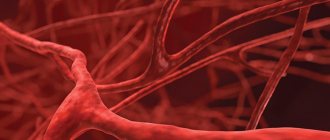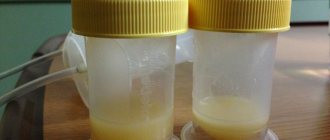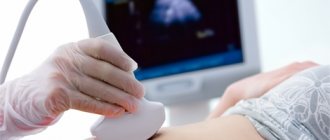A mouth smear is not the most common test in dermatovenerological practice.
However, venereologists sometimes suggest that their patients be examined for sexually transmitted diseases (STDs) in this way.
It happens that such patients are referred to a dermatovenerologist by doctors of other specialties - dentists, therapists, otolaryngologists.
The reason is simple.
Many pathogens of STDs, in addition to the genitals, feel very good in the oral cavity or on the epithelium of the ENT organs.
Who needs a mouth swab and when, how and where it is done - we will tell you below.
What is it and why?
The oral cavity of every person is very densely populated with microorganisms.
Most of them are harmless saprophytes, among which there are cocci and bacilli.
There are even non-pathogenic spirochetes.
Our body has learned to coexist safely with them, and we simply do not notice them.
But such prosperity does not always happen.
Problems arise when foreign microorganisms enter the oral cavity.
For example, pathogens of sexually transmitted infections that thrive on the mucous membranes of the mouth and genitals.
The list of microbes that are capable of such a change in habitat is quite wide:
- Trichomonas
- treponema pallidum
- human papillomaviruses (HPV)
- herpetic group viruses
- gonococci
- chlamydia
In principle, this list can include almost all STD pathogens.
A smear helps to identify them in the mouth.
The most common throat diseases
Among the most common diseases of the ENT organs in this area are pharyngitis, laryngitis and tonsillitis.
Pharyngitis
Pharyngitis is an infection of the mucous membrane of the pharynx and lymph nodes. As a rule, pharyngitis occurs against the background of an acute inflammatory disease of the upper respiratory tract. More often, pharyngitis is caused by viral-bacterial flora or fungal infection; other causes include injuries and allergic reactions. With prolonged inflammation of the pharyngeal mucosa, the disease can become chronic. Frequent colds, pathology of the gastrointestinal tract, smoking, drinking alcohol, exposure to chemicals and living in unfavorable environmental conditions can contribute to this. Exacerbation of chronic pharyngitis can be facilitated by other infectious diseases, decreased immunity, hypothermia, stress, and increased physical activity.
The main symptom of pharyngitis is pain when swallowing. The disease may also be accompanied by dryness, burning, itching, general weakness and headaches. Pharyngitis is dangerous because the infection from the pharynx can move to the middle ear and cause deterioration and even hearing loss, or go down to the larynx and cause laryngitis and tracheitis.
Laryngitis
Laryngitis is an inflammatory process of the mucous membrane of the larynx. It can occur either independently or against the background of other inflammations of the nasopharynx. There are catarrhal and phlegmonous forms. The first is characterized by the spread of inflammation only to the mucous membrane of the larynx, the second - to the submucosal layer, ligaments and muscle tissue. Laryngitis can be triggered by hypothermia, contact with people with ARVI, inhalation of irritants, smoking (including hookahs and electronic cigarettes - steam generators).
A distinctive symptom of laryngitis, in addition to changes in voice, is a “barking” cough that irritates the throat. Just like other similar throat diseases, hoarseness is a characteristic symptom here; pain when swallowing, difficulty breathing, and inflammation of the lymph nodes may also be present. Among the most serious complications of laryngitis are infiltration of the epiglottis, abscess, damage to the vocal cords, up to complete loss of voice.
Angina
Sore throat is an acute infectious disease characterized by damage to the tonsils, which is caused by viruses, bacteria or fungi. In this case, pathogens can either enter the body from the outside or already be in the body and become activated when immunity decreases. A sore throat begins acutely with a sharp deterioration in well-being and an increase in body temperature to 38-39° C. It is important not to confuse this with a common cold. A sore throat is characterized by severe sore throat, swollen lymph nodes and aching joints. When examining the patient, pustules are observed on the tonsils.
If you suspect a sore throat, you should immediately consult a doctor, because improper treatment is fraught with the development of complications in the form of abscess, otitis, meningitis, sepsis and many other life-threatening conditions.
Diagnostic value of mouth swab
At its core, it is completely, 100% analogous to a urogenital smear.
The only difference is where the diagnostic material is taken from.
A mouth smear helps determine the spectrum of oral microflora in the person being examined, regardless of gender.
This method refers to laboratory-instrumental techniques and performs one task: obtaining diagnostic material for a detailed study of microflora.
Samples obtained using a mouth swab are examined in different ways:
- microscopy of native material and fixed, stained smear
- bacteriological examination (culture)
- immunological studies
- molecular genetic
The main thing is to correctly and accurately collect diagnostic samples.
But before you collect them, you need to determine who needs it.
Smear from the tonsils for fungi
A swab from the throat for microflora and sensitivity to antibiotics, fungi are taken during illness with tonsillitis, pharyngitis and other diseases of the ENT organs in order to determine which viruses and bacteria cause inflammation, as well as to determine their sensitivity to antibiotics.
The smear normally contains several types of bacteria. When an infection occurs (whooping cough, diphtheria, tonsillitis, etc.), the composition changes.
How is a throat swab taken?
At the Medline Surgut clinic, a swab is taken from the throat using a sterile cotton swab wound on a wire loop.
To take a smear, the base of the tongue is pressed with a medical spatula, and then the doctor runs a swab along the tonsils, palatine arches and the wall of the pharynx. A smear is taken exclusively from the specified areas. If the tampon touches, for example, the tongue or the mucous membrane behind the cheek, the test result will not be considered reliable - the composition of the smear will change.
What infections can it detect?
Normally, the microflora of the throat consists of staphylococci, fungi of the genus Candida, streptococci and pneumococci.
A throat swab will tell you about the presence of pathogens:
- diphtheria;
- meningitis;
- tonsillitis;
- acute respiratory infections;
- whooping cough, etc.
Based on the composition of the smear, the doctor draws conclusions about changes in the qualitative and quantitative composition of the microflora, as well as about the susceptibility of microorganisms to the action of certain antibiotics.
To identify the nature of fungi and determine the effectiveness of antifungal agents on them, a special analysis for fungal infection
.
Streptococcal infection
found in sore throat, scarlet fever, pneumonia and other diseases.
Group A pyogenic staphylococci
– a sore throat caused by a streptococcal pathogen can pass without any symptoms or be accompanied by an increase in body temperature and other characteristic symptoms.
Staphylococcal infection
– dangerous scarlet fever, transmitted by airborne droplets, through unwashed hands or objects used by the carrier of the infection. The pathogen initially settles in the nasopharynx, causing a sore throat with its characteristic symptoms and rash, and then, as a result of its vital activity, the bacteria produce an exotoxin (Dick's toxin), leading to general intoxication and severe allergies.
Eosinophils
– leukocytes involved in allergic mechanisms. Their presence in the smear indicates that the disease is of an allergic nature. By identifying them, it is possible to distinguish allergic rhinitis from rhinitis caused by infection.
When a fungal infection is detected
one can judge the presence of agranulocytosis, asthma, mycoplasmosis, etc.
Fungi of the genus Candida
– always present in small quantities in the microflora of the pharynx, but with a decrease in immunity they begin to actively multiply, leading to the development of various diseases.
Note!
The causative agent of many diseases is Staphylococcus aureus. The infection is transmitted by airborne droplets and household contact. Treatment of staphylococcal infections is not an easy task, since the microorganism can withstand many unfavorable external conditions and quickly becomes immune to the action of antibiotics. This is why it is so important not to self-medicate, but to rush to get medical help!
Rules for preparing for the test
:
- Eating is prohibited 2 hours before taking a smear (it is better to take it on an empty stomach).
- After gargling, a smear is taken only after 2 hours.
- Before the analysis, it is necessary to clear the nose of existing mucus.
Indications for performing an oral smear
The reasons for conducting such a study differ for doctors of different specialties.

As for venereology, here are the main symptoms for which dermatovenerologists take a swab from the mouth:
- burning and pain in the mouth
- painful rash on the mucous membranes of the mouth and cheeks
- enlarged tonsils without pronounced clinical signs
- complaints of a sore throat for a long time
- the appearance of painless lumps and wounds in the mouth, on and under the tongue
- unpleasant odor with the exception of dental caries
- sour taste, foamy saliva
In principle, everything is decided individually each time.
We have listed only a few signs that indicate the main STDs characteristic of lesions in the oral cavity.
Throat swab: features of the procedure
Before taking a swab from the mucous membrane of the throat, the patient should be informed about special preparation. So, the procedure should be carried out on an empty stomach or no earlier than 3 hours after drinking or eating. Before performing it, you should also not rinse your mouth, brush your teeth, use oral sprays, or use antibiotics.
The analysis procedure is as follows:
- the patient opens his mouth wide;
- The ENT
examines the oral cavity, determines the place where the discharge is collected; - the doctor presses the tongue with a spatula and runs it along the back wall of the throat and the mucous membrane of the tonsils with a sterile swab;
- carefully removes the swab and lowers it into the test tube;
- records the time of taking the analysis.
Useful information on the topic:
- Pediatric ENT
- Diagnosis of ENT diseases
- Consultation with an ENT doctor
- Treatment of ENT diseases
- Examination by an ENT doctor
- Prevention of ENT diseases
- ENT doctor appointment
- EAR, throat, nose
- Otolaryngology
- Paid ENT
Typical signs of oral STDs
It often happens that people come to dermatovenerologists from dentists or laryngologists.
After the treatment from these doctors turned out to be ineffective.
Or after the patient has had a mouth smear examined for microflora.
And they found sexually transmitted infections in the material.
How they get there is sometimes quite difficult to figure out.
The most common method is oral sex.
It is also necessary to remember that more than 200 thousand germs are transmitted with a deep kiss.

And, if your partner had herpetic rashes in the mouth, infection cannot be avoided.
The same applies to atypical forms of primary syphilis, gonorrhea and other STDs.
Gonorrhea is transmitted through oral sex.
It manifests itself as a sore throat, hoarseness and other symptoms of a prolonged cold.
Syphilis is the same.
Characteristic signs are painless lumps and reddish ulcers on the tongue and red border of the lips.
May occur as chronic flaccid tonsillitis.
Trichomonas, chlamydia and mycoplasma when localized in the mouth do not cause specific symptoms.
They can be suspected only by a lingering cough or tonsillitis.
The patient's general well-being does not deteriorate.
Herpes is easy to detect: pain and burning, rashes on the mucous membranes, transforming into erosions.
Relapses up to 5-6 times a year.
Against the background of immunodeficiency, constant persistence of rashes in the mouth is possible.
Human papillomavirus lesions are painless and usually have the appearance of genital warts.
Having reached large sizes, they can make swallowing and speech difficult.
Infection through domestic means cannot be ruled out.
All infections can be transmitted through a toothbrush.
Because of this, children whose parents suffer from the oral form of one or another sexually transmitted infection often suffer.
Another reason for taking a swab from the mouth is the need to assess the prevalence of STDs when examining a patient with established damage to the reproductive organs.
Symptoms of throat diseases
Most throat diseases have pronounced symptoms. Moreover, the clinical picture for each disease is individual. Among the common and most basic symptoms it is worth highlighting:
- sore throat that gets worse when swallowing;
- sore throat, dry throat;
- cough;
- hoarseness of voice;
- temperature increase;
- enlargement of the submandibular and cervical lymph nodes;
- weakness and general malaise;
- headache;
- bad breath.
The combination of several of these symptoms at once is a reason to immediately consult a doctor. If symptoms increase and health deteriorates, prompt medical care is necessary.
Some throat diseases can cause rapid swelling of the larynx. As a result, without medical assistance, the patient can quickly die from suffocation. If you experience pain, immediately make an appointment with a doctor. This will help quickly and effectively eliminate the disease.
Indications for their use
A throat smear for infection is mainly prescribed for persistent and recurrent diseases of the oral cavity, nose and lung tissue.
Other indications include the following:
- addiction to the drug;
- ineffectiveness of prescribed therapy;
- examination during pregnancy;
- the child’s admission to kindergarten;
- suspicion of a dangerous infection;
- period of preparation for surgery;
- planned medical examination.
In addition to the obvious need, a smear can be examined to detect infection in advance, when no symptoms have yet been observed. This will allow you to undergo a preventive course of therapy and suppress a dormant infection.










